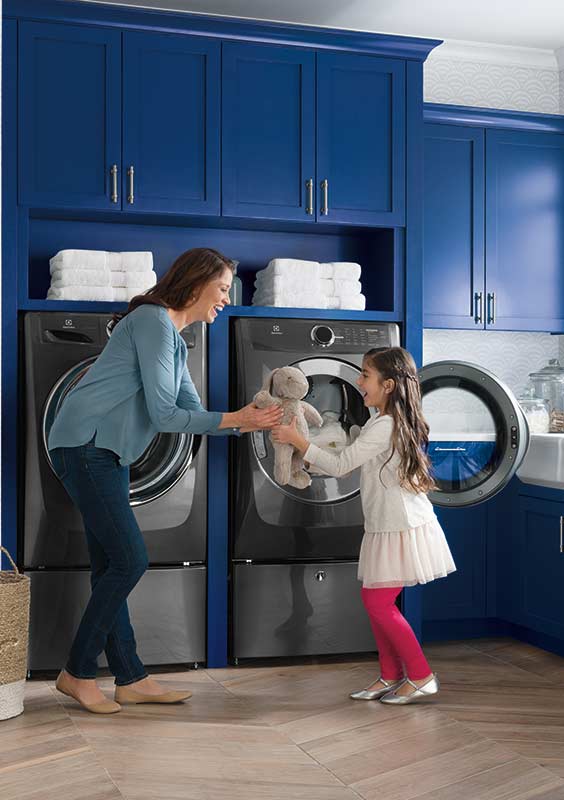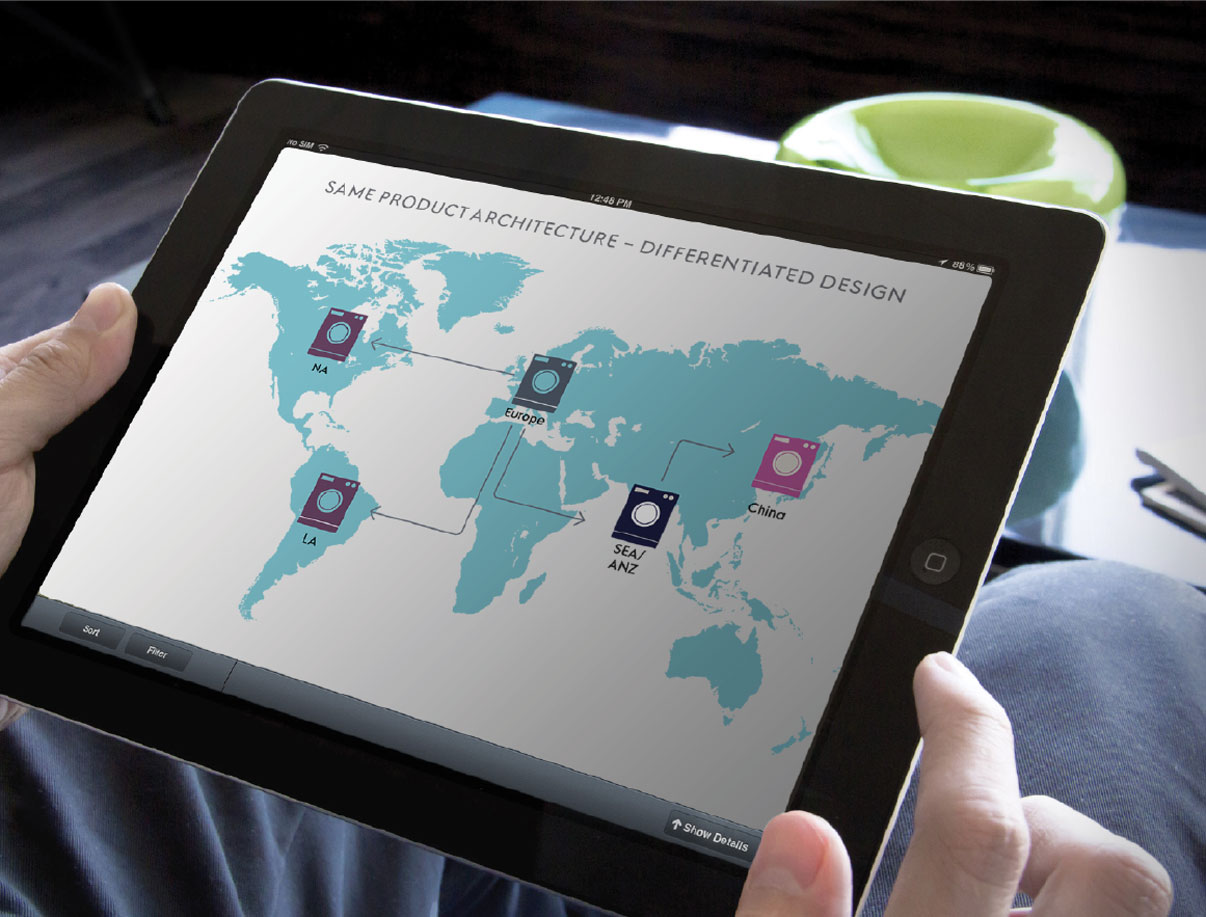Electrolux ensures a competitive cost structure by focusing on continuous efficiency improvements in variable product costs as well as structural costs. Striving to minimize complexity and make work practices simpler is the foundation of a stable and focused organization.
For over a decade, Electrolux has gradually restructured its production through a program for optimizing the manufacturing footprint. About one-third of the Group’s manufacturing has been moved, primarily from Western Europe and North America, to new production centers. Electrolux has closed some 20 plants, reduced manufacturing at many others and opened new production centers, mainly in low-cost areas. These new production centers have been established both to reduce costs and to support strategic growth markets in Asia, Latin America, Eastern Europe and Northern Africa.
In 2016, about 65% of total manufacturing by Electrolux was carried out in low-cost areas, compared with about 30% in 2004. These Group-wide restructuring programs have now been completed.
Efforts to optimize operations have now entered a new phase, with a focus on modernization, automation and adjustments to existing plants to ensure a competitive cost structure.
The foundation for this is a stable and focused organization that strives to minimize complexity and make work practices simpler to deliver products and services of superior quality and high delivery reliability.
The drive to make operations more efficient concerns both variable and fixed product costs.
A number of programs aimed at enhancing efficiency are ongoing within the Group with the aim of reducing the variable product costs every year. These variable costs include materials, direct and indirect payroll costs, logistics and warranty costs. Efforts focused on global coordination of procurement and the Electrolux Manufacturing System (EMS) to reduce manufacturing costs continue with full force. At the same time, the Group has implemented a number of new initiatives to increase efficiency and reduce costs even more, for instance, a cost excellence program is in operation to promote quicker and more effective processes.
Increased automation and digital processes for closer collaboration with Electrolux suppliers will help to reduce costs, improve product quality and develop new products.
The EMS, which was launched in 2005, has been implemented at all production units and work in this program stepped up during the year. The program focuses on continuous improvements in terms of product quality, costs, inventory optimization, occupational health and environmental impact. The EMS continued to make a positive contribution in 2016. Manufacturing costs have declined significantly since 2011 and energy use per appliance unit produced has decreased 42% since 2005. Targets are set to continuously reduce resource use and waste through the Green Spirit program, an integral part of the Electrolux Manufacturing System. Improved energy efficiency lowers annual energy costs by more than SEK 425m a year, and means a reduction in emissions of 293,000 tonnes of CO2 compared with 2005. The Green Spirit program aims to improve energy efficiency by more than 50% by 2020 as part of the target of reducing the CO2 impact by 50% by 2020.
The Group’s global economies of scale are clear in the coordination of purchasing raw materials, components and finished products. The global purchasing function coordinates and administers approximately 60% of all purchasing. The Responsible Sourcing program supports the worldwide effort in making the right decisions on suppliers and upholding the sustainability performance of our supply base. During 2016, additional resources were provided to the program in Southeast Asia and an extensive internet-based supplier training initiative was carried out in six countries in the region.
An extensive modularization program is ongoing that lowers product costs and the product development spend through standardized global modular platforms for new products. In 2015, a new phase in these efforts was implemented called Modularization 2.0, which has continued in 2016. This entails expansion of the project from its initial focus of reducing product complexity and savings on the direct cost of materials, to improvements in five primary areas:
AUTOMATION. To a greater extent, new products are designed to allow a higher degree of automation in their manufacture.
DIGITALIZATION. Digitalized processes with supplier and retailers increases flexibility, reduces lead times and improves delivery reliability.
INCREASED PACE OF INNOVATION. Modularization unlocks resources for investment in product development.
QUICKER TIME TO MARKET FOR NEW PRODUCTS. Experience demonstrates that modularization means that the time from product development to market for a new product is reduced by 20–30% and that the investment cost decreases by 15–20%.
REDUCED MATERIAL AND PAYROLL EXPENSES. Through an increasing number of products being built on a number of shared modules within the Group, savings can be made at the purchasing stage and, in parallel, increased automation leads to reduced direct payroll expenses.
Modularization leads to increased flexibility by allowing customization of products at late stages of production, supported by a more digitalized purchasing process and implementation of a system to enable better communication with suppliers and retailers. Modularization is driven by a global team of mixed nationalities with experience from various key positions at Electrolux.
The efficiency initiatives continued to yield clear results during the year. Modularization increased in the various product groups and led to increased efficiency in terms of product development, marketing and production.
The Group strives to continuously reduce its structural costs. For this purpose, and through an improved way of working, a higher resource efficiency and increased usage of digital tools and processes, the Electrolux Continuous Improvement Program (ECIP) was launched during the year. The objective is to reduce structural costs by up to 0.5% of net sales on an annual basis.
Efficiency within sales and administration is driven by items including shared IT systems and service centers for finance and accounting. Legal entities are reviewed and merged continuously to create shared infrastructures for all regions.
For a number of years, Electrolux has worked intensively to reduce tied-up capital in the Group. In addition to Group-wide measures to streamline and optimize manufacturing, each business area is working on reducing working capital to release resources that can instead be invested in growth activities. The work focuses primarily on the areas: trade receivables, accounts payable and inventory. The working capital program has resulted in an increase in the capital-turnover rate and a reduction in working capital.
The product life cycle perspective guides the Group in reducing its environmental impact by indicating the degree of impact in raw-material extraction, manufacturing, transportation, use and end-of-life treatment.
The most significant environmental impact for Electrolux operations is energy and water consumption when products are used. Accordingly, improving efficiency of products during design and development of products is a top priority. The impact from manufacturing and transportation is significantly smaller, but is still addressed.
Electrolux is committed to sustainable growth and, accordingly, efficient use of resources comprises a key component of this. Through the Green Spirit program, which is an integral part of the Electrolux Manufacturing System, targets are set to continuously reduce the use of resources.
Materials used in household appliances comprise primarily steel, plastic and electronic components. Savings in materials are achieved by optimizing the use of input materials, without compromising product performance and quality. Electrolux is phasing out chemicals of concern and is working proactively to identify potentially hazardous material. New scientific findings and stakeholder requirements are used to regularly update the restricted materials list (RML).
The aim is to increase the proportion of recycled materials in new products. Up to 70% recycled plastic is used in selected vacuum-cleaner models. Energy use and CO2 emissions have high priority, and Electrolux has targets for absolute and relative reductions. The average energy consumption per unit produced in comparable plants has decreased by 19% during the last five years. Electrolux target is a 20% improvement in energy efficiency by 2020 compared with 2015.
For society as a whole, over 25% of global CO2 emissions derives from the transport sector. Electrolux has set a target to improve the CO2 efficiency of transportation in core markets by 15% by 2020.
Water shortages are a major problem in many regions. Electrolux has a long-term commitment to help improve management of limited water resources. Together with World Wildlife Fund, Electrolux mapped water-related risks associated with Group plants. As a result, the Group is implementing water management system controls to improve water efficiency in manufacturing by 5% each year in areas where water shortages prevail.
| 2012 | 2013 | 2014 | 2015 | 2016 | |
| Energy per standard unit | 100 | 97 | 96 | 90 | 88 |
| Energy consumption | 100 | 99 | 96 | 92 | 88 |
| CO<sub>2</sub> emissions | 100 | 101 | 99 | 99 | 75 |
| Water consumption | 100 | 86 | 78 | 72 | 76 |
-19
%
The average energy consumption per unit produced in comparable plants has decreased by 19% during the last five years.
-29
%
The average water consumption per unit produced in comparable plants has decreased by 29% during the last five years.

It is by reducing use of resources such as power and water during the everyday operation of its appliances that Electrolux can best contribute to a reduction in climate impact. The Group is cutting climate impact over the products’ lifecycle by 50% by 2020 relative to 2005 levels. Approximately 25 million tonnes of CO2-equivalents will be cut in emissions deriving from product use, from production and transportation as well as from the use of greenhouse gases. As of 2016, 14 million tonnes have been cut.
* Calculated as the average of eleven different appliances.
